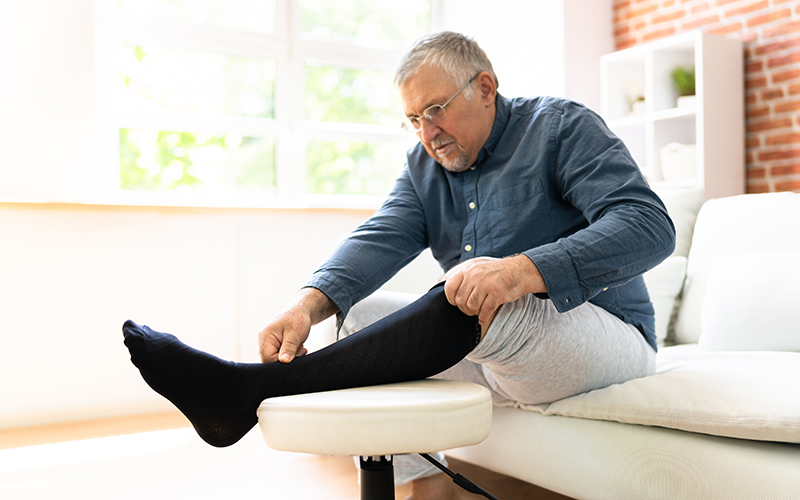
Peripheral Arterial Disease (PAD) refers to blockages in the arteries, causing a mismatch between oxygen supply and demand. When tissues, especially hardworking ones like muscles, don’t get enough oxygen, symptoms arise. In this DocTalk video, Meghann Nelles Dalstrom, MD, a vascular surgeon at Valley, discusses the symptoms, diagnoses, treatment options and more for PAD.
An abbreviated summary of the talk is below the video.
Learn more about vascular care at Valley.
Peripheral Arterial Disease (PAD) refers to blockages in the arteries, causing a mismatch between oxygen supply and demand. When tissues, especially hardworking ones like muscles, don’t get enough oxygen, symptoms arise. PAD severity depends on how much the arteries are blocked and how deprived the tissues are of oxygen.
What are the common symptoms of PAD that patients should look out for?
Early PAD often goes unnoticed at rest, but when muscles are working—like when walking—patients may feel cramping in the calves. This occurs because the blocked arteries can’t provide enough oxygen. The cramping stops with rest. In severe cases, pain may occur even at rest, and wounds may fail to heal.
What causes PAD? Who is most at risk for getting it?
Tobacco use is the leading cause of PAD. Smoking damages arteries, but high cholesterol, diabetes, and kidney disease also can lead to PAD. Stopping smoking is the most effective way to reduce the risk of PAD.
How do you diagnose PAD?
PAD is typically diagnosed through a physical exam and tests. A doctor will check pulses in the feet, possibly using a Doppler device if the pulses are hard to detect. An ultrasound, a simple and non-invasive test, is often used to identify blockages in the arteries.
What are the common treatment options available for PAD?
For early PAD, stopping smoking and increasing walking can help. Walking improves the body’s tolerance to reduced oxygen, and the body may create small bypasses around blockages. For more severe cases, minimally invasive procedures like angiography may be used to open arteries. In some situations, traditional surgery may be necessary.
What steps can people take to reduce the risk of developing PAD?
The most important step is to stop smoking. In addition, maintaining a healthy diet, exercising regularly, and controlling blood pressure and cholesterol are essential. Certain medications, like aspirin, Plavix, and statins, can also help manage PAD by improving arterial health.
If someone has symptoms they’re concerned about, what should they do next?
If you have symptoms that might be related to PAD, see a doctor. Keeping track of your symptoms will help your doctor assess the situation. Basic tests, such as checking pulses and comparing blood pressure in the arms and legs, can determine if you have PAD. A referral to a vascular surgeon may follow if necessary.
Understanding Our DocTalk Videos
The information shared in the video above represents the opinions of the individual healthcare provider(s) featured. Our DocTalk presenters will sometimes give a general overview including risks, symptoms, and treatments for the medical conditions they are addressing. Therefore, they may not cover specific details that would be available in other resources or in an appointment with a provider about your own healthcare conditions. Please also note that the written summary may not capture every detail contained in the video, and additional information might only be in the video format. Our goal is to inform, educate, and inspire healthier living. If you have any questions about the video content, please contact us HERE.

